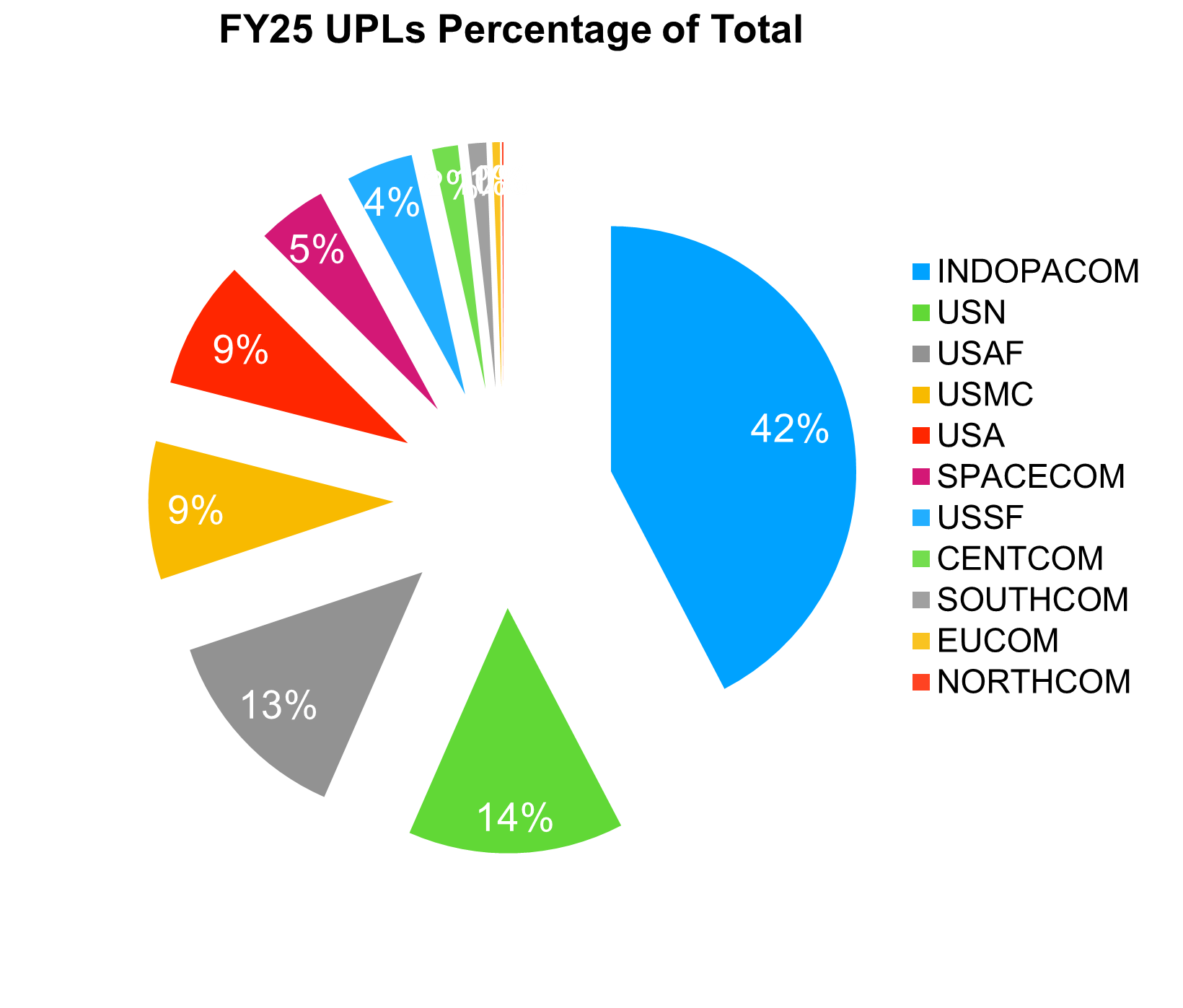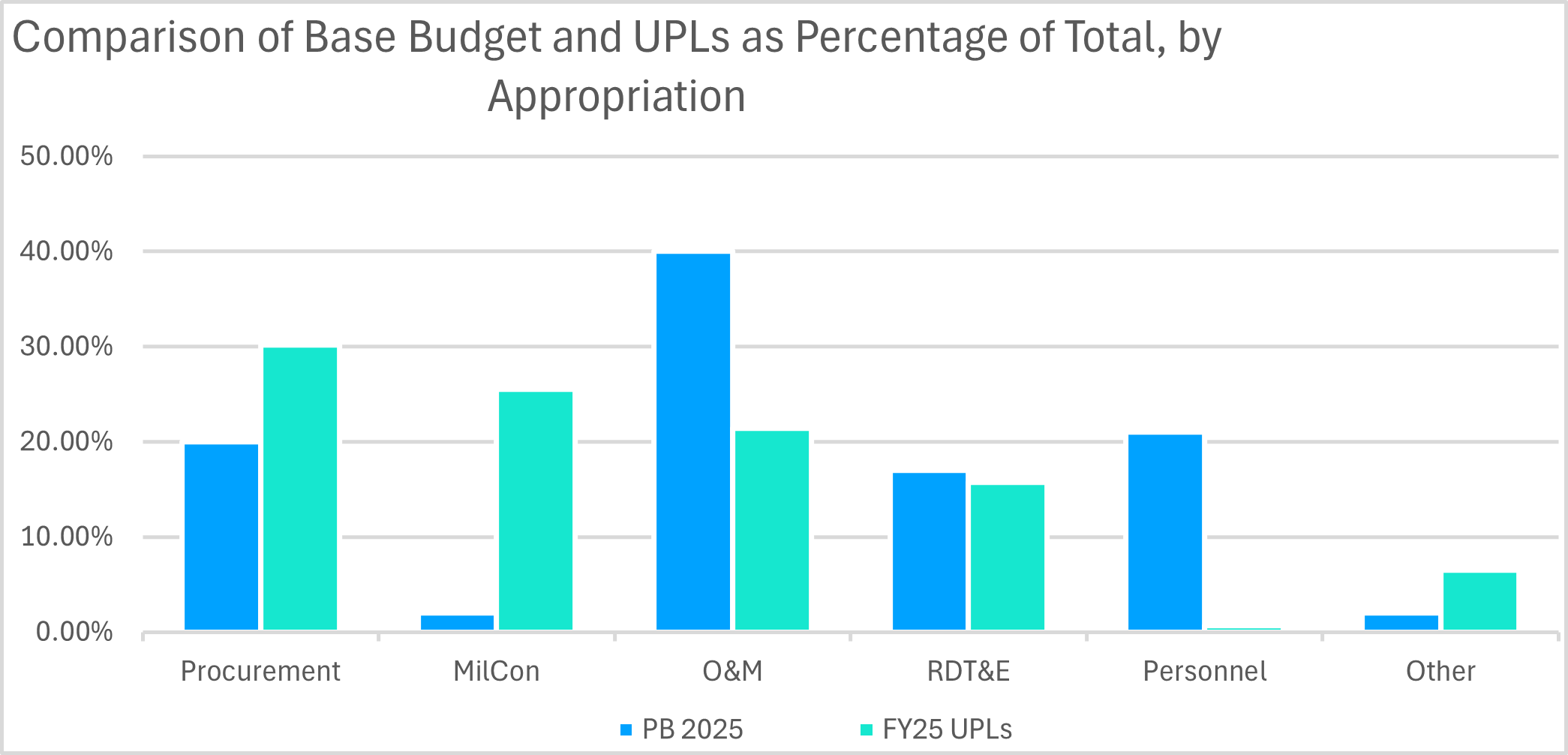- Reaction score
- 8,231
- Points
- 1,160

Major trends and takeaways from the Defense Department’s Unfunded Priority Lists - Breaking Defense
Mark Cancian and Chris Park of CSIS break down what is in this year's unfunded priority lists and what they say about the state of the US military.
 breakingdefense.com
breakingdefense.com

Major trends and takeaways from the Defense Department’s Unfunded Priority Lists - Breaking Defense
Mark Cancian and Chris Park of CSIS break down what is in this year's unfunded priority lists and what they say about the state of the US military.
Over the last month, Breaking Defense has published a series of reports on the unfunded priority lists from the military services and combatant commands. In a new analysis, Mark Cancian and Chris Park analyze the lists as a group, highlighting common themes and the reasons behind the requests.
the annual unfunded priority lists (UPLs, or “wish lists”) get attention as indicators of where holes exist in the defense budget. This year’s lists total a near-record high of $29.4 billion
an analysis of the collected UPLs shows a few themes carried across all the lists: no additional military personnel, concerns about a rising and increasingly aggressive China, risks in other theaters, and the need to replenish stockpiles of missiles and spare parts.
A Near-Record Total
Fourteen UPLs are available publicly.... The 14 UPLs total $29.4 billion, a near-record amount that clashes with the Fiscal Responsibility Act of 2023 (FRA). The FRA, passed last year to avoid a default on US government debt, caps the defense budget at a one percent increase ($850 billion). If Congress funded all items on the UPLs, the FY25 defense budget would reach $879 billion — compared to the president’s budget request for FY 2025 (PB25). This would represent a 4.4 percent increase from the enacted FY 2024 budget ($842 billion), outpacing inflation by about 1 percent.
Comment - It is interesting to compare this unfunded 29.4 BUSD wish list to the 94 BUSD aid package just voted through the House today. The argument in both cases is that the money has to be borrowed.
Who Is Driving This Year’s Near-Record Amount?
The answer is clear: Indo-Pacific Command (INDOPACOM). INDOPACOM’s $11 billion UPL is by far the largest and comprises 42 percent of the total — nearly equal to all the military services.

Shortfalls identified in the INDOPACOM theater are not limited to the combatant commander’s list. The Military services also ask for funds for exercises, military construction (MilCon), and other activities in the INDOPACOM theater. This is not surprising for the theater facing China’s “pacing” challenge. However, the large amount, on top of the $9.9 billion Pacific Deterrence Initiative, raises questions about whether the president’s budget can handle strategic competition with China as well as the other demands of a global superpower. The real-world answer may ultimately be: no.
EUCOM repeated last year’s request to acquire air base defense systems because of heightened concerns about vulnerability as a result of its experience in the Ukraine War. The request notes that PB25 accepted risks in the European theater as the Air Force prioritized air defense capabilities for Indo-Pacific bases. Here, as in other places in the budget, the tension between a focus on the Pacific and the global commitments of a superpower becomes manifest. The Pentagon’s National Defense Strategy says that the Pacific gets priority, but EUCOM is facing an immediate threat.
What Do The Services And Combatant Commands Want Most?
The chart below compares the UPLs with the base budget as percentages of the whole. Noteworthy is the relatively small amount of personnel funding requested in the UPLs and the large amount for military construction (MilCon).

Personnel ($0.1 billion) — A Noteworthy Absence
The lack of requests for additional personnel is striking. ...None of the services requested more active-duty personnel in their UPLs. The National Guard Bureau did submit a UPL for more personnel, mostly additional recruiters to help maintain the total personnel numbers. These would mostly be personnel shifting from part-time to full-time.
Recruiting difficulties make increasing the number of personnel difficult in any case, as does hesitation in taking on the long-term commitment that additional military personnel would constitute.
Extra bodies don't seem to be a priority item. They can't be found.
But
This also reflects a tension in the National Defense Strategy. On the one hand, the defense strategy calls for trading off force structure for modernization. The Army, Navy, and Air Force all get smaller in line with this strategy. Nevertheless, all the services note how busy they are, with many operational deployments and engagements with partners and allies. Resolving to do the same amount of work with fewer people only goes so far.
Military Construction ($7.4 billion) And Facilities Maintenance — A Disproportionately Large Amount
MilCon is perennially underfunded, being less glamourous than capital accounts that buy weapons or munitions. The services also expect that Congress will add money, amounting to $1-2 billion in typical years. It is no surprise, then, that the MilCon amount in the UPLs is the second largest of all the appropriations.
Most of the additional MilCon funding requested would support projects to improve the US footprint in the Indo-Pacific. INDOPACOM, seeking $3.3 billion, identified missing funding for facility upgrades — for example, Micronesia’s Yap Airfield runway extension — to improve theater access. Notably, neither the base budget nor the UPLs included hardened aircraft shelters, despite their utility in defending against a missile attack. The Air Force instead has focused on dispersion.
Quality of Life for personnel seems to be a priority, trying to hold on to the people they have.
Other requests responded to embarrassing reports about deteriorating barracks and family housing. The defense budget requested $2.3 billion in barracks and family housing construction. The Marines nevertheless identified shortfalls in barracks improvement as its top unfunded priority. The Air Force listed funding for dining facilities and child development centers.
Procurement ($8.8 billion)
To meet the lower FRA caps, DoD cut $8 billion from the FY25 procurement request compared to what was projected in FY24. These URLs would, in effect, put that money back in.
The UPLs request $3 billion for aircraft-related procurement, including funds to buy 14 additional aircraft. This responds to the unusually small number of aircraft in the base budget. The Air Force requests only 82 aircraft, and the Navy 75. The Air Force and Navy would need about 250 aircraft annually to maintain their current inventories. Yet, even with the UPLs, the total number of aircraft procured would not be adequate.
Neither the Air Force, the Navy, nor the Marine Corps requested any fighters, including F-35s. The National Guard Bureau notably requested six additional F-15EX and six F-35s. The National Guard is particularly sensitive to the level of aircraft procurement because it flies the oldest aircraft. It worries that without regular aircraft upgrades, its aircraft may be deemed obsolescent, and its units unfit for operations on modern battlefields.
The lack of aircraft procurement might seem to indicate that the services are shifting to uncrewed systems. However, there are only $250 million of UPL requests for such systems.
The flying community looking for alternatives that are not yet ready for prime time while being concerned that the existing inventory might not be what they want to bet on in the future? Money committed to future buys of existing products is money that issn't available for innovation.
PB25 requests $29.8 billion for munitions procurement, $16 billion of which is for tactical missiles. On top of that, the services and combatant commands identified a $2.3 billion shortfall to procure additional Tomahawks, Long-Range Anti-Ship Missiles, and other missiles needed for a potential war in the Indo-Pacific. Although there is a strong analytic case for buying more munitions, production constraints likely mean that industry could not accommodate all these requests, even if the money were available.
The Navy’s most interesting item was what was not on its list: a submarine. The Navy cut a submarine in PB25, breaking from the plan to procure two attack submarines per year. It did not even hint that Congress should add the submarine back. This is likely a result of reported shipbuilding delays. There is no point in adding money for ships that the industrial base cannot build.
Navy having the same problem as the munitions people - lack of industrial capacity. Also, committing money to a submarine reduces future funds available for innovation.
Instead, the Navy requested $403 million to bolster the submarine industrial base. Designated as the top priority, this request may also help AUKUS implementation. As Breaking Defense reported earlier, this may be a backup for the $3.4 billion designated for the submarine industrial base in the Ukraine/Israel/border security supplemental.
Across the board, the US military seeks to adapt to drone warfare observed in Ukraine and the Middle East, particularly after the deadly attack on the US military desert outpost in Jordan. The Army, CENTCOM, EUCOM, and AFRICOM requested over $680 million to develop and acquire several counter-unmanned aerial systems (c-UAS) systems. This was on top of more than $800 million for c-UAS in the base budget.
Mine warfare in the Black Sea has provided a reminder of how important these weapons can be. Thus, INDOPACOM requests an additional $482 million to procure mine systems. PB25 includes $100 million for the Navy to procure maritime mines, nearly double the $58.8 million in the FY24 budget but still far below what is needed. Mine warfare, particularly offensive mine warfare, remains a perennially under-resourced area.
One of the potential uses of the Ghost Shark XLUUV is mine laying.
Operations And Maintenance ($6.2 billion)
O&M needs are nearly insatiable since they cover the full scope of operations, readiness and training. The Army, the Air Force, and INDOPACOM requested nearly $1 billion for “campaigning” in the Indo-Pacific. These funds would support military exercises in the region, enabling, for example, the Air Force to test its new operational concept.
The Navy seeks funds to recertify older SM-2 missiles in the stockpile and procure new ones, as the missiles are used to intercept Houthi missiles in the Red Sea. Some of these replacement missiles may get funded in the Ukraine/Israel supplemental.
Research, Development, Test, And Evaluation ($4.6 billion)
The Research, Development, Test, and Evaluation (RDT&E) request (17 percent of the total UPLs) is in line with the RDT&E proportion in the base budget (16 percent).
The UPLs submitted by the Space Force and Space Command skewed heavily towards RDT&E, with over 70 percent of the identified shortfalls in this category. This reflects the capital-intensive nature of space operations. Space Force’s base budget is 78 percent acquisition and 63 percent RDT&E alone.
17% of the budget going to experimentation and development.....


